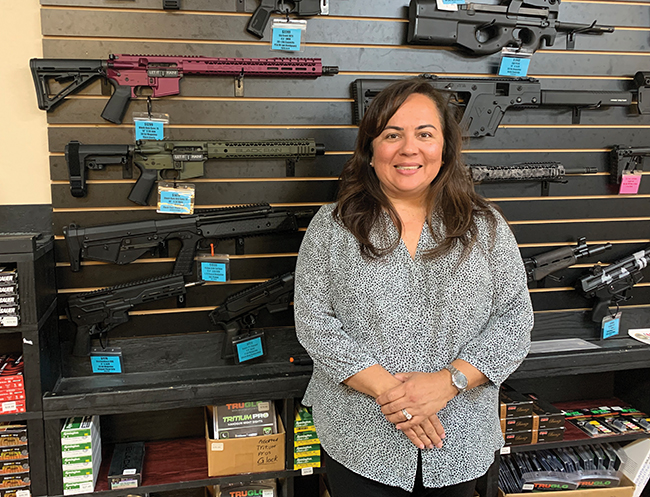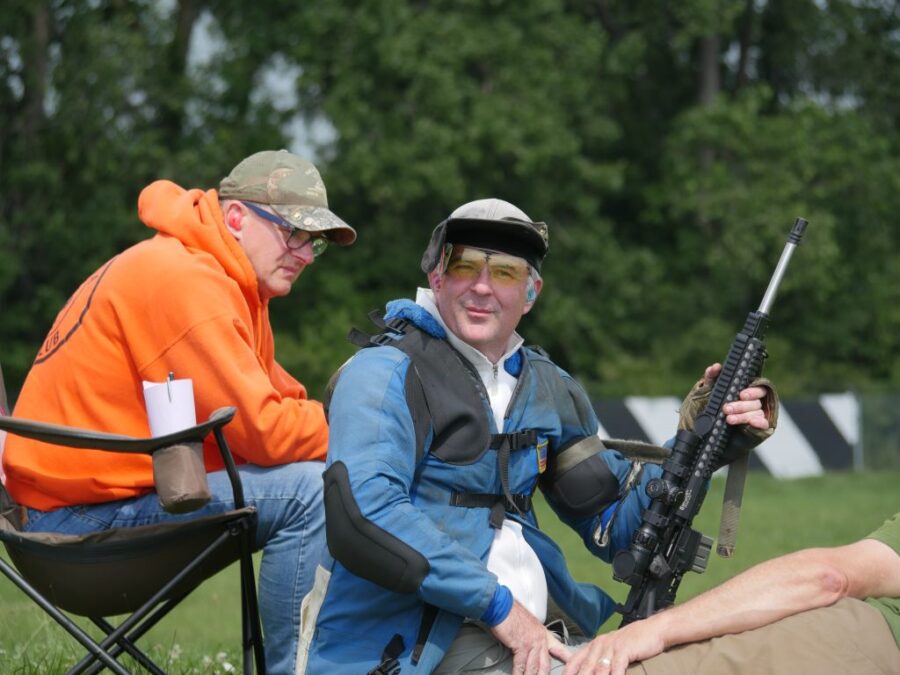Selling The Defensive Battery
The serious armed defender really needs a wardrobe of guns. Why should he or she buy them from anyone but you?
Armed American citizens have historically modeled their gun choices on what their police carried. Remember when standard armament for police was a 4–6″ service revolver, a snub-nose .38 for detectives (and as back-up) and a shotgun with a 18–20″ barrel in the patrol car?
Well, if you’re old enough, flashback to what armed citizens bought from American gun shops for concealed carry and home defense back then. The most common home-defense handgun was a double-action, service-type revolver.
In cities where a specific gun was recorded by the police department when they issued the carry permit, from New York City to Concord, N.H., the most commonly listed gun was some variation of J-Frame Smith & Wesson or D-Frame Colt revolver in caliber .38 Special. And the most common home-defense long gun? You guessed it: The scattergun.
The public sees the police as the resident experts on fighting violent criminals, so it’s not illogical to arm themselves with the same gear those resident experts have chosen. The lesson here is not so much what guns are in the respective armories, but that those role model cops have multiple guns for multiple protective situations.
Today’s police officer carries a semi-automatic pistol, most commonly a high-capacity 9mm — striker-fired with polymer frame. It’s likely to be accoutered with a weapon-mounted light and, increasingly, a red dot. Though the backup gun function remains the last bastion of the revolver in American police service, a small 9mm of the baby GLOCK or SIG P365 genre is increasingly taking its place and for primary off-duty carry. And the shotgun? It has been supplemented with or, more often, completely replaced by the .223-caliber autoloading patrol rifle, primarily the AR-15.
Let’s examine a logical armed citizen parallel.
Defensive Gun Categories
It’s a good idea to have more than one gun for home defense. First, if there are multiple members of the household capable and responsible enough to be trusted to use a deadly weapon to defend against a violent home invasion, it makes sense to have enough hardware to arm each of them.
Handguns
These are the obvious choice for concealed carry. They have historically done a good job of home defense, too. Feel free to share with your customers my theory of home defense armament: The handgun is “infantry;” the long gun is “artillery.”
Answer the door at 3 a.m. holding an AR or an 870 and you’ll probably get shot by the cops, the single entity most likely to be knocking at that hour while searching for a felon in the area or coming to notify you of some emergency. A pistol can be discreetly hidden if your customer has to open the door at all.
If the customer has (unwisely) gone searching for what caused the proverbial bump in the night with a long gun, it occupies both hands. A handgun leaves one hand free to work a phone, light switches and a flashlight and to balance against a door frame when taking “quick peeks.” It allows a parent to scoop up a small child with one hand while running to the designated safe room, with the other hand ready with a pistol or revolver. If they have to go mobile, they’re “infantry” and the handgun affords more of that critical mobility.
Once it is certain intruders have breached and made entry, police have been called and the family is bunkered together, it’s time for the “artillery.” It gets this name not just from the greater power of rifle or shotgun, but because it’s employed from a static location against an already-plotted field of fire.
If we’ve counted noses and all the good guys are on our side of the door, when the criminal invaders breach their final portal, we’re probably going to be past the point of verbal crisis intervention and it’s time for what’s colloquially called “stopping power.” If something coming through the door threatens our babies, we want to blow the most and largest holes in it, bringing us to the long guns.
Carbines & Shotguns
The choice of carbine or shotgun depends largely on the familiarity and skill with firearms and the physical stature of the people who will be wielding them. Just as the patrol rifle has almost completely supplanted the shotgun as “police car artillery,” it’s becoming the long gun of choice for home defense. More shots. Less recoil. More likely to have a collapsing buttstock, which, in an instant, allows it to be adjusted to fit the largest and the smallest members of the household who’ve been deemed authorized to use it in such an emergency.
No one among the home defenders wants to kill anyone for any reason. Remind your customer of something anti-gun politicians need to hear, too. If AR-15s are so scary an entire political party and two presidents have wanted to ban them, might it not be scary enough for an intruder facing one to run away and not force the homeowner to spill any blood at all?
Spares & Supplements
The small carry gun your customer already has is convenient for him or her — but remind them smaller guns hold fewer rounds and are harder to shoot fast and straight. Larger guns hold more and make it easier to deliver sufficient, accurate, rapid fire.
Why did cops have two kinds of guns, both then and now? Same logic — and don’t let the customer forget they’re arming themselves to defend against the exact same criminals the cops are armed to face … and overcome.
Just as most people have a wardrobe of different clothing for different seasons and occasions, regular pistol packers have a “wardrobe of firearms” for almost exactly similar reasons. (For example, I usually carry something between a 9mm GLOCK 19 and a full-size 1911 .45 Auto, but today the sciatica is acting up on my right hip and a little Smith & Wesson CSX rides there as I write this.)
For the broad spectrum of personal defense in the street and in the home, don’t neglect accessories. Consider selling body armor if you don’t already: Most of your customers are defense-minded, and they know in a gunfight the bullets go in both directions.
You’re going to sell them hearing protection for when they practice shooting anyway. Remind them active hearing protectors, while more expensive, will let them hear things they wouldn’t hear when indoor gunfire has made their ears ring, and they need to hear as well as see where the intruders are.
The more tools for specific needs the worker has, the better he or she can do the job. It’s equally true when “The Job” is defending their loved ones against homicidal criminals.
You’ve heard it before in this column, but I’ll say it again: The gun prohibitionists call us all fear-mongers. They’re wrong. You don’t sell the fear. You sell the cure.





